Heraldic Symbols
There is absolutely no reason heraldry in fantasy worlds
should follow the small print of European Heraldry.
However, the basic ideas (which European Heraldry pays lip service to
but doesn't follow too closely) are sound:
Symbols should be easy to recognise
Symbols should be in a dark colour against a light background, or vice versa
The reasons for these rules are simple:
they enable the onlooker to recognise the heraldic symbol at a distance, and quickly.
So it's reasonable to suppose that they apply in fantasy universes too.
Symbols
Here are some symbols not over-used in European Heraldry
Borromean Rings

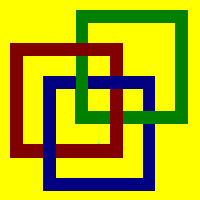

The Borromean Rings symbolise both friendship and strength-in-unity,
so are suitable for both good-aligned and lawful-aligned characters.
There are also Borromean squares, triangles, and any other geometric shape
you care to name as long as it has a hole in the middle.
The idea can be extended to four or more rings, but they start to look
crowded, so I wouldn't recommend it.
The Borromean Rings are also topologically related to the Walknot,
associated with Odin.

Further reading:
Borromean Rings Home Page
Cook's Borromean Ring Links
Borromean Rings
Pentacle
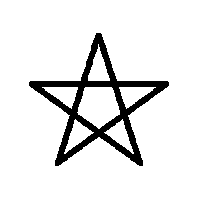
The Pentacle is traditionally associated with protection magic,
with the five elements (air, earth, fire, water and spirit),
and with umpteen other things magical and/or esoteric.
It is also the symbol of several deities, most notably Isis.
It also looks rather like a star, so is suitable for anyone who practises
his or her religion under the night sky (i.e. druids and possibly rangers),
and it has acquired association with conjuration magic.
Further reading:
The Pythagorean Pentacle
Pentacle
Oddly enough, the Heptacle does not seem to have any magical or
religious associations. Perhaps no-one is sure which one is the proper one to use
- there are two of them, a fat one and a tthin one.
They are still perfectly good geometrical symbols, simple to draw and easy to recognise,
so could certainly be used in fantasy heraldry.


Alchemical Symbols
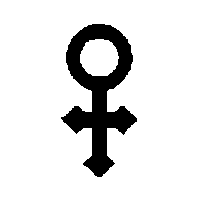
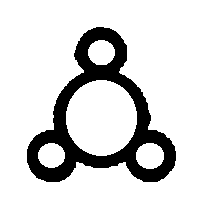
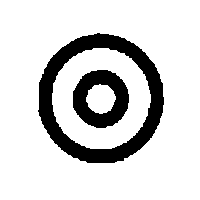

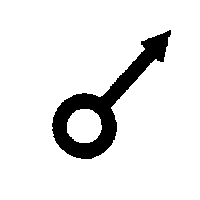

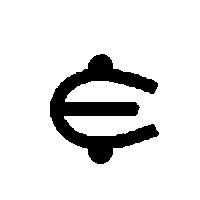

For those unfamiliar with alchemical symbols, these are, respectively:
| Copper | Silver | Gold | Platinum |
| Iron | Sulphur | Mercury | Arsenic |
There's actually quite a lot of choice about which symbols to use for what.
Alchemists were, by nature, secretive, and no two of them used exactly the
same set of symbols. I have made my own selection. If you don't like them,
or want to consider some alternatives, see the links below.
In a fantasy setting, there are obvious uses for alchemical symbols.
A warrior might use the symbol for iron as his personal symbol;
so might a blacksmith.
Whitesmiths might use the symbols for silver, gold or platinum;
so might a moneylender.
Assassins might use the symbol for arsenic.
Further reading:
A Visual Interpretation of the Table of Elements
Alchemical Symbols
Alphabet
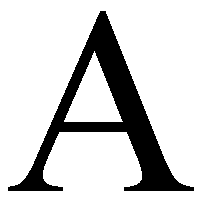

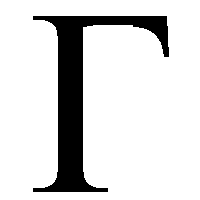
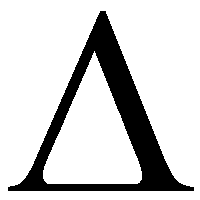
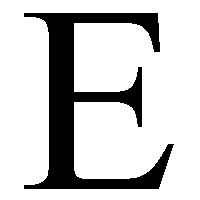


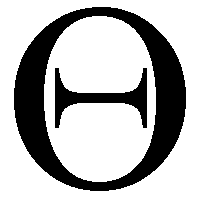

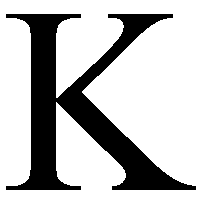
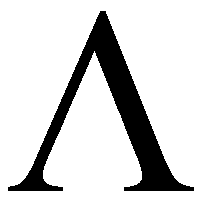

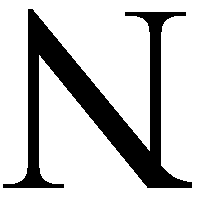


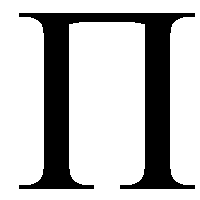



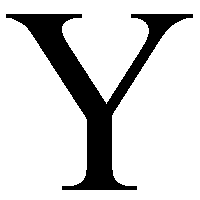
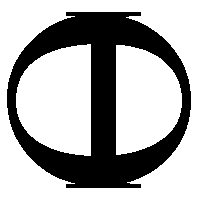



The letters of the Alphabet have been seriously underused in heraldry.
Although most peasants (and most warriors) in fantasy worlds cannot read
(hence the need for heraldry in the first place),
they presumably have a reasonable idea of what sound each letter represents,
and could guess that A is the symbol of Aargh the Awesome
and B is the symbol of Bozo the Bold.
As well as representing sounds, some letters actually look like things.
For example, T looks like a tree, and I looks like a temple column,
so T might be a druidic symbol and I a clerical one.
Runes
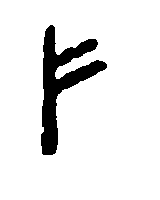
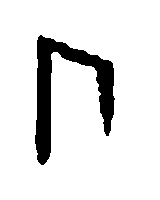
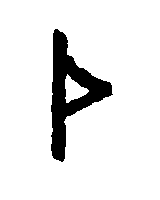
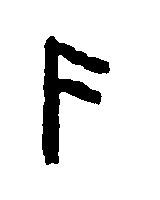
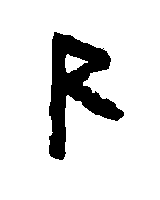
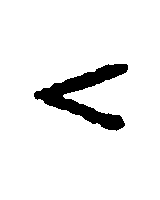
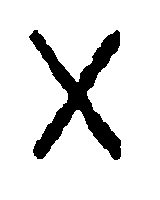
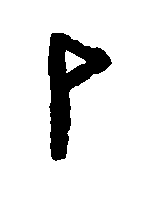
| Fehu | Uruz | Thurisaz | Ansuz |
| Raidho | Kenaz | Gebo | Wunjo |

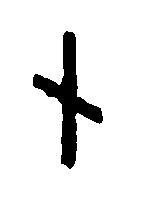

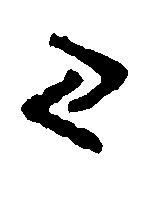
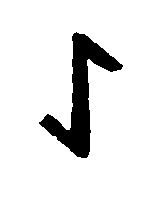



| Hagalaz | Nauthiz | Isa | Jera |
| Eihwaz | Perthro | Algiz | Sowilo |

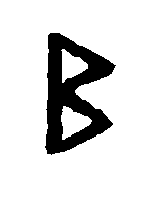

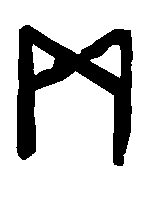

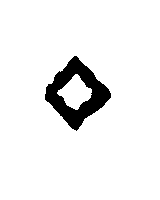
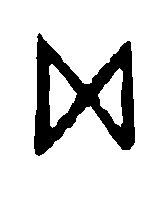

| Tiwaz | Berkano | Ehwaz | Mannaz |
| Laguz | Ingwaz | Dagaz | Othala |
The Runes have far too many meanings and associations to go into here. Check the links.
Of course, they're also a phonetic writing system,
so (as with the Alphabet above) could be used simply to denote the
initial letter of someone's name.
Runes were originally designed for writing on tree-bark,
and for this reason do not include horizontal lines (which would split the wood along the grain).
To get the right feel, they should not be straightened out too much.
Further reading:
Runes, Alphabet of Mystery
The Runic Journey
Kanji
Kanji are ancient Chinese characters used to write modern Japanese.
As far as I know, no-one has yet ascribed mystical significance to kanji,
but give them time.
The important point to remember is that each kanji denotes an idea,
not a pronunciation (each kanji will typically have two or more pronunciations).
Kanji are painted with a brush, so should be left curly rather than straightened out.
Here is a selection of some of the simpler and more relevant kanji:

Transformation, a symbol of power to those who practise alteration magic,
particularly polymorph spells. It is also associated with therianthropes
(monsters who adopt human form), and monsters in general.
This kanji also relates to enchantment, influence and delusion, so it
also relates to enchantment and illusion magic.

Change, another symbol of power to those who practise alteration magic.
It is associated with things out of the ordinary.

Illusion, a symbol of power to those who practise illusion magic.
Since it also relates to visions and dreams, this kanji also relates to divination magic.

Prophetic Dream, a symbol of power to those who practise divination magic.
Since it also relates to visions and fantasies, this kanji also relates to illusion magic.
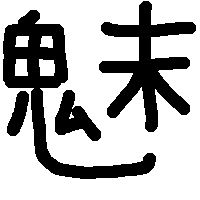
Charm, a symbol of power to those who practise enchantment magic.
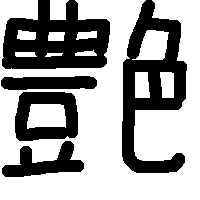
Charm, a symbol of power to those who practise enchantment magic.
Yes, there are two of them.

Omen, a symbol of power to those who practise divination magic.
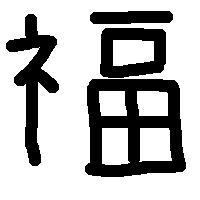
Fortune, another symbol of power to those who practise divination magic,
also related to the Goddess Fortuna.

Heart (also mind, spirit, soul, feelings, emotions),
has associations with both enchantment magic and necromancy.

Power, including muscular strength, willpower and magical abilities.
Could be used by a warrior, a priest, a magician, or especially by a
multi-classed character.
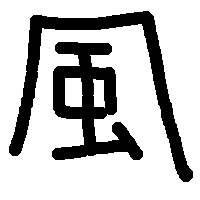
Air, a symbol of power to those who practise air elemental magic.
This kanji has a secondary meaning which includes manners, customs and traditions.
(Be careful, as it has a third meaning: the common cold.)

Earth, a symbol of power to those who practise earth elemental magic.
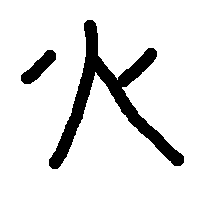
Fire, a symbol of power to those who practise fire elemental magic.

Water, a symbol of power to those who practise water elemental magic.
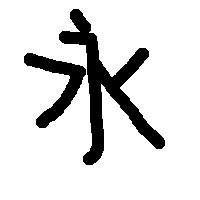
Eternal, looks confusingly like the kanji for water, so be careful.
It's the extra little line at the top which changes the meaning.
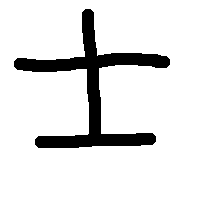
Knight, looks confusingly like the kanji for earth, so be careful.
The important difference is that the knight has longer arms than legs.

Supernatural being, particularly humanoids with spell abilities
such as elves.

Law, a symbol of power to those of lawful alignment.
Since it also relates to rhythm, this kanji also relates to song magic.
There is also a kanji for chaos, but it is rarely used.

Grove, a symbol of power to druids.
The bit on the left means tree, and the bit on the right means earth.
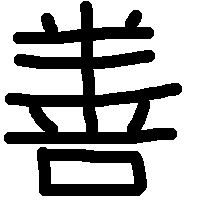
Good, a symbol of power to those of good alignment

Evil, a symbol of power to those of evil alignment
(not that anyone would admit to being of evil alignment, of course).

Sword, an obvious heraldic symbol for a warrior.

Shield, another obvious heraldic symbol for a warrior.
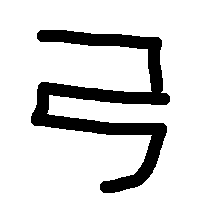
Bow, another obvious heraldic symbol for a warrior.
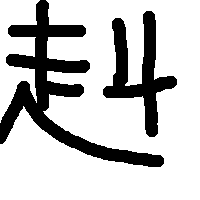
Valiant, a heraldic symbol which may appeal to paladins.
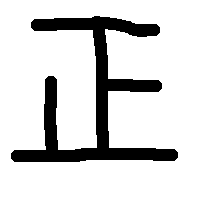
Righteous, another heraldic symbol which may appeal to paladins.

Dragon. Don't mess with anyone who uses this as a heraldic symbol.
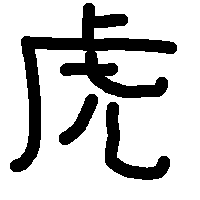
Tiger. Traditionally, the tiger is regarded as opposed to, and
the equal of, the dragon.
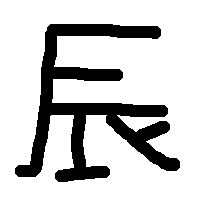
Dragon. This is a stylised heraldic dragon, not a real monster.
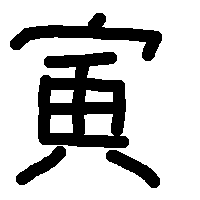
Tiger. This is a stylised heraldic tiger, not a real animal.

Devil, demon or other harmful evil spirit.
Someone might want to use this as a heraldic symbol
in order to frighten the opposition. It has a secondary meaning
of extreme (possibly inhuman) competence.
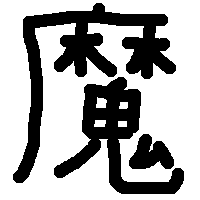
Devil, demon or other harmful evil spirit.
A magician might want to use this as a heraldic symbol
in order to frighten the opposition. It has a secondary meaning
of sorcery (although even here there is a connotation of evil).
The kanji itself, with 21 strokes, is enough to frighten me.
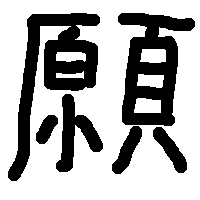
Wish, a very powerful symbol.
In case you're wondering, the bit on the left means plain, field or plateau
(with a secondary meaning of original, primary or primitive),
and the bit on the right means true, real, actual or genuine.
Further reading:
Jeffrey's Kanji Lookup
Backgrounds
Keep it simple. There is absolutely nothing wrong with a plain background.
If you want something a little more fancy, I would suggest one of the following:
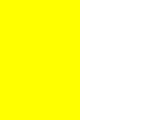
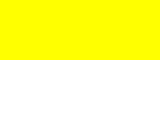
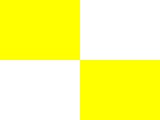

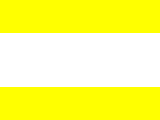

If there is a symbol to be added, stick to two colours.
If the symbol is a dark colour, both background colours should be light.
If the symbol is a light colour, both background colours should be dark.
If there is no symbol to be added (i.e. the pattern is the symbol),
three or even four colours is OK, and they should alternate light and dark.
The keep-it-simple rule does not apply to illusionists.
See Akiyoshi Kitaoka's Illusion Pages
for some suggestions for backgrounds for illusionists.
Colours
White in the background is simply a neutral background which makes
the foreground symbol more visible.
White in the foreground may suggest virtue or purity.
White can also be a substitute for silver, in which case it may signify moderate wealth,
or a substitute for platinum, in which case it may signify excessive wealth.
Black in the background may signify the night sky.
Black in the foreground may suggest evil,
but may also be chosen simply to make the foreground symbol stand out better.
Black foreground against white background may suggest writing on paper,
and is an appropriate choice for scholarly wizards.
According to the
list of science fiction cliches,
superheroes wear primary colours (red, yellow, blue),
while supervillains wear secondary colours (orange, green, purple).
Although this need not extend to heraldry, it is something to bear in mind.
Red often signifies blood, either literally or metaphorically (courage).
Red in the background may suggest the rising or setting sun.
Although technically a dark colour, red stands out quite well against black and vice versa,
and this combination should not necessarily be ruled out.
Yellow in the background may suggest sunlight or the desert.
Yellow in the foreground may suggest the sun.
Yellow can also be a substitute for gold, in which case it may suggest wealth.
Green is an unlucky colour for those of lawful alignment.
It usually suggests the natural world and/or those who live in it,
including druids, rangers, outlaws and elves.
Although in European heraldry there is only one colour green,
there is no reason why this limit should apply to a fantasy world,
and (at least) both light green and dark green should be permitted.
Blue in the background usually suggests either the sky or the sea.
Although in European heraldry there is only one colour blue,
there is no reason why this limit should apply to a fantasy world,
and (at least) both light blue and dark blue should be permitted.
Light blue in the background usually suggests the daytime sky;
dark blue in the background usually suggests the evening sky.
In the foreground, dark blue stands out well against most light backgrounds
and may be chosen simply for this reason.
Orange is usually chosen by mandarins,
Purple is usually chosen by emperors,
and Pink is usually chosen by the terminally cute.
All three are best avoided.
Grey does not appear in European heraldry,
but there is no reason not to use it in a fantasy world.
Mid-grey should be avoided, as it is neither light nor dark
and would therefore not contrast with anything well enough to show up clearly,
but both light grey and dark grey should be permitted.
Examples
Eight Schools of Magic








If you've been following the plot, you should be able to recognise which is which.
Lawful Good Knights

Well, they say they're lawful good,
and as they're heavily-armed it's sensible to take them at their word.
Paladin
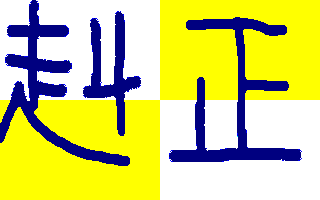
Let us not be cynical. Righteous and valiant? What else could he be but a paladin?
Harmless Little Old Man
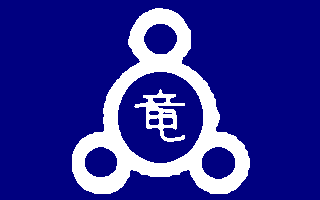
There's this harmless little old man living as a hermit half-way up a mountain.
Occasionally, he's visited by his three beautiful blonde daughters.
Frankenstein the Fearsome
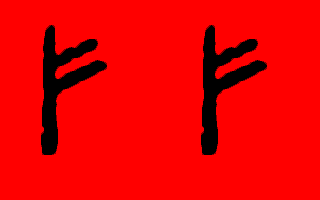
What? You haven't heard of Frankenstein the Fearsome?
Surely the name is enough!
Anyone will tell you that he's the evilest necromancer on the continent.
Teleport Society
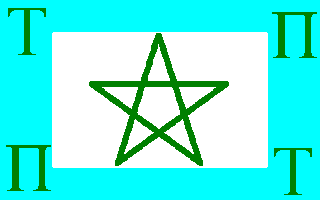
The Teleport Society aims to promote public awareness that Teleport
is a conjuration spell, not an alteration spell.
Teleport moves intelligent beings from one place to another.
It doesn't change them into anything else.
Bozo the Bold
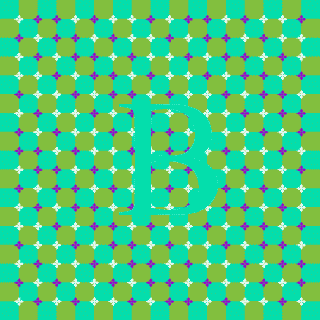
I did remember to say that Bozo the Bold is an illusionist noted for
skilful use of the invisibility spell, didn't I?
The background is Primrose Field by
Akiyoshi Kitaoka.











































































































